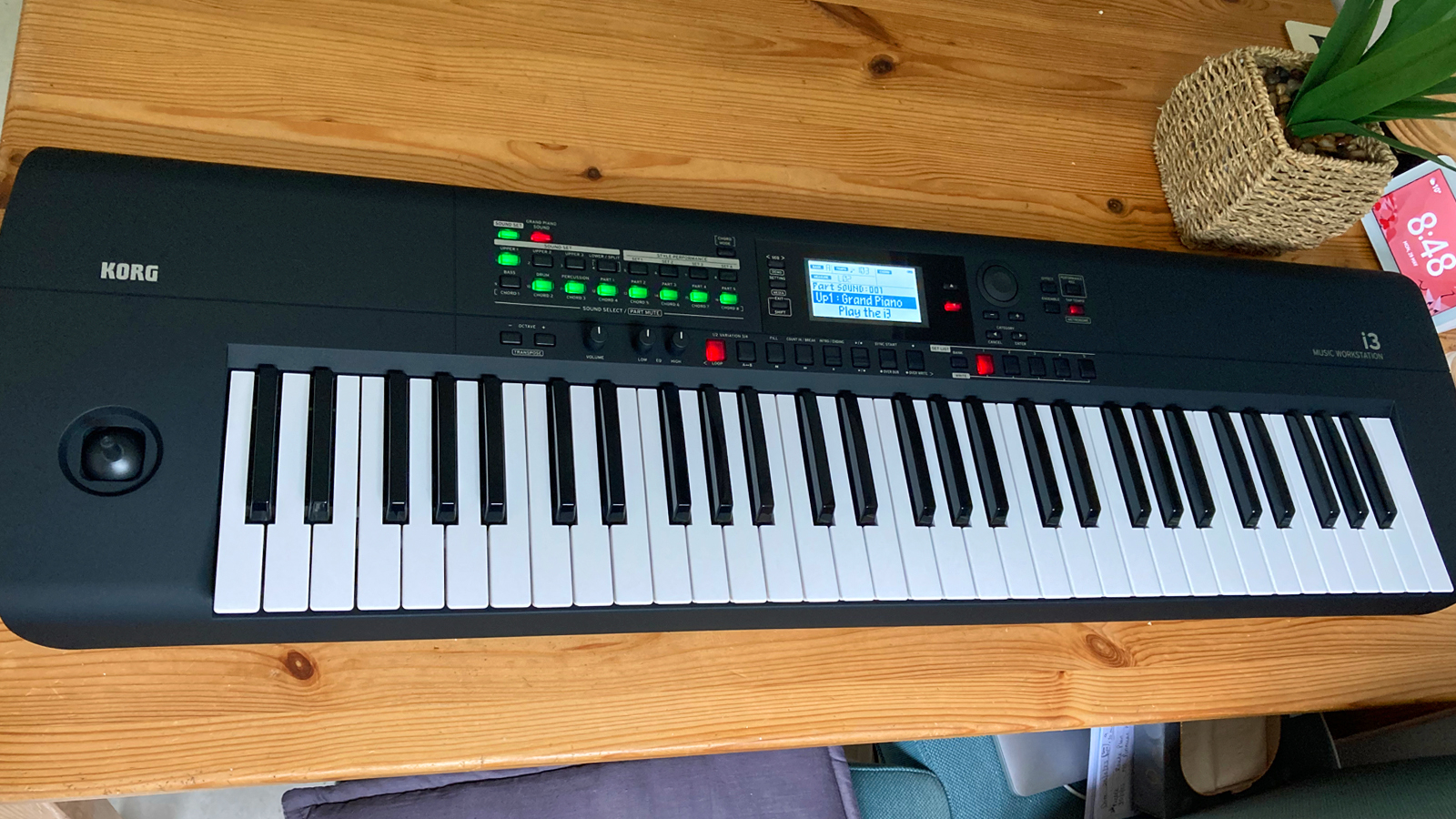
Korg i3 review: What is it?
You might have already heard of the Korg i3. The original was a sophisticated, 61-key keyboard workstation that came out in 1993, so the current model - introduced in 2020 - is not the first Korg keyboard to bear the name. Billed as Korg’s easiest-to-use workstation ever, this newer incumbent bristles with design cues that stir up echoes of Korg’s pioneering M1 workstation from 1988.
Matte black body? Check. Translucent illuminated buttons? Check. We even have a four-way performance joystick, replacing the standard pitch bend and modulation wheels found on the majority of other keyboards. Alternatively, if you prefer a more ’90s Korg’ look, the i3 is also available in a very Triton-esque silver finish.
Under the hood, the i3 contains many of the features and sounds of the EK-50 Entertainment Keyboard, expanding on its feature set but swapping the EK-50’s built-in speakers for an onboard 16-track sequencer.
The i3’s 790 onboard sounds are provided by Korg’s EDS-X (Enhanced Definition Synthesis - eXpanded) engine, an evolution of the EDS-i chip found in the EK-50L. Of the 270 onboard styles, there are several EDM styles unique to the i3 that are not found in the EK series, so the overall first impression of the i3 is that it seems to be aimed at a slightly younger demographic than its cheaper stablemate.
Korg i3 review: Performance and Verdict

Upon unboxing the i3, I was surprised to find that, despite the honeycomb-style pattern on the ends of the casing, there are no speakers onboard, which does somewhat beg the question, who is this keyboard actually for? The lack of speakers seems a hefty sacrifice merely to qualify as a workstation rather than an arranger keyboard. At only 4kg, it does make the i3 a very lightweight and portable instrument though, so much so that it can run off 6 x AA batteries for several hours, so it’s a bit disappointing that you’ll need to make use of those line outputs or use headphones to get any sound out of it.
As we’ve come to expect from Korg, the i3’s build quality is great. The vaguely boat-like contours of the casing lend the unit a clean, modern look and the joystick is, unsurprisingly from the name, a joy to use. The fascia has the same rubbery, matte black finish as the EK-50L that, while complementing the looks, does seem to attract cat hairs and dust like nothing else on earth. The 61-key keyboard has a relatively lightweight synth action that’s very easy to play and gets the job done with no fuss.
The i3’s interface seems to have been distilled from Korg’s pricier Pa range of premium arrangers, with a brightly-lit, white LCD display neatly conveying useful information such as the current tempo, chord, style and soundset. The jog wheel used to select sounds and styles is a bit small and has no indentations for you to get a good purchase, merely a shallow, chamfered edge around the circumference with no dimple for your finger to sit in. If you get tired of spinning this, you can navigate the list with the adjacent plus/minus buttons, and there are also two category buttons below with which you can skip to the next or previous category of voice or style, speeding things up considerably.
Into the soundset
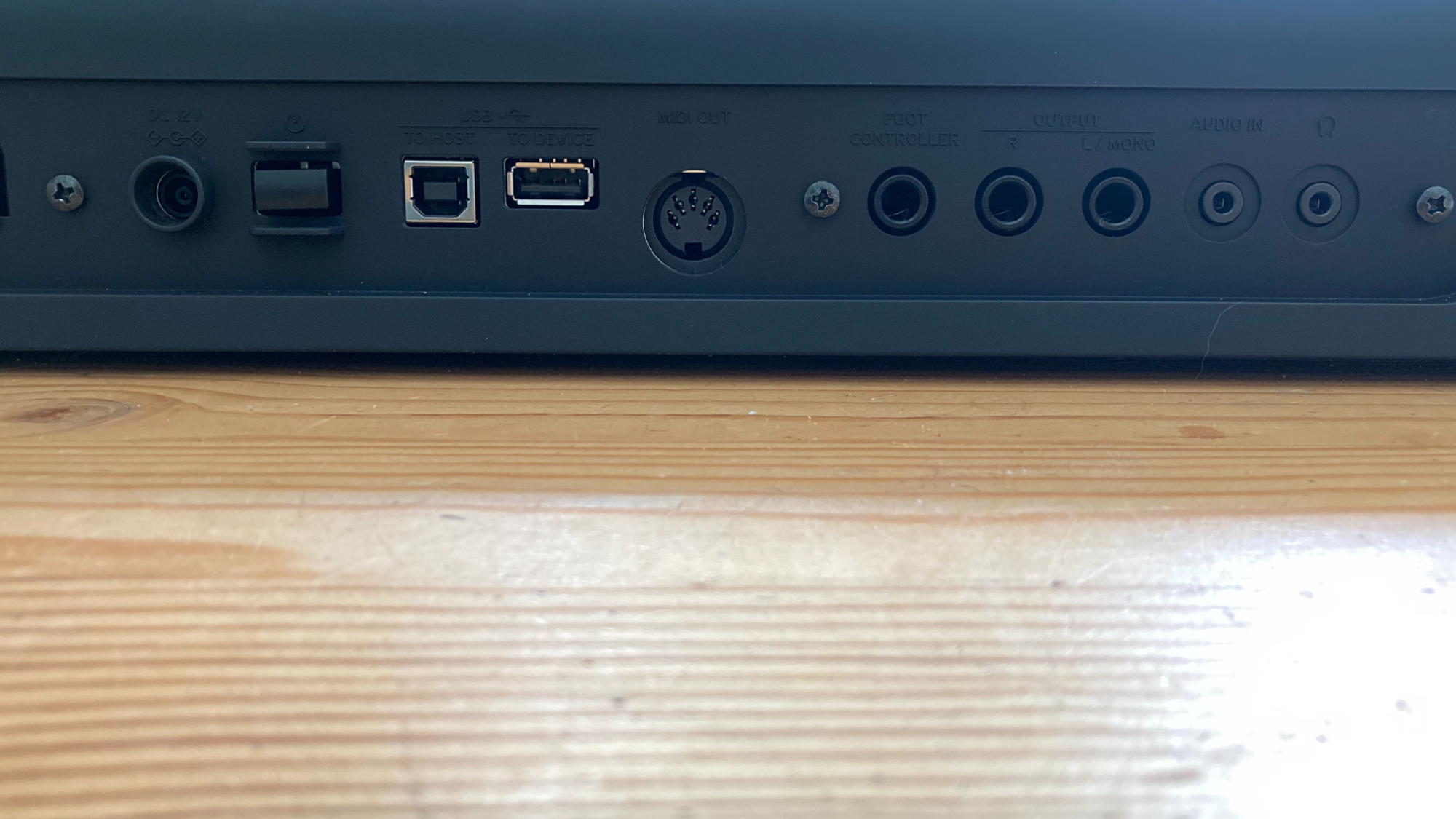
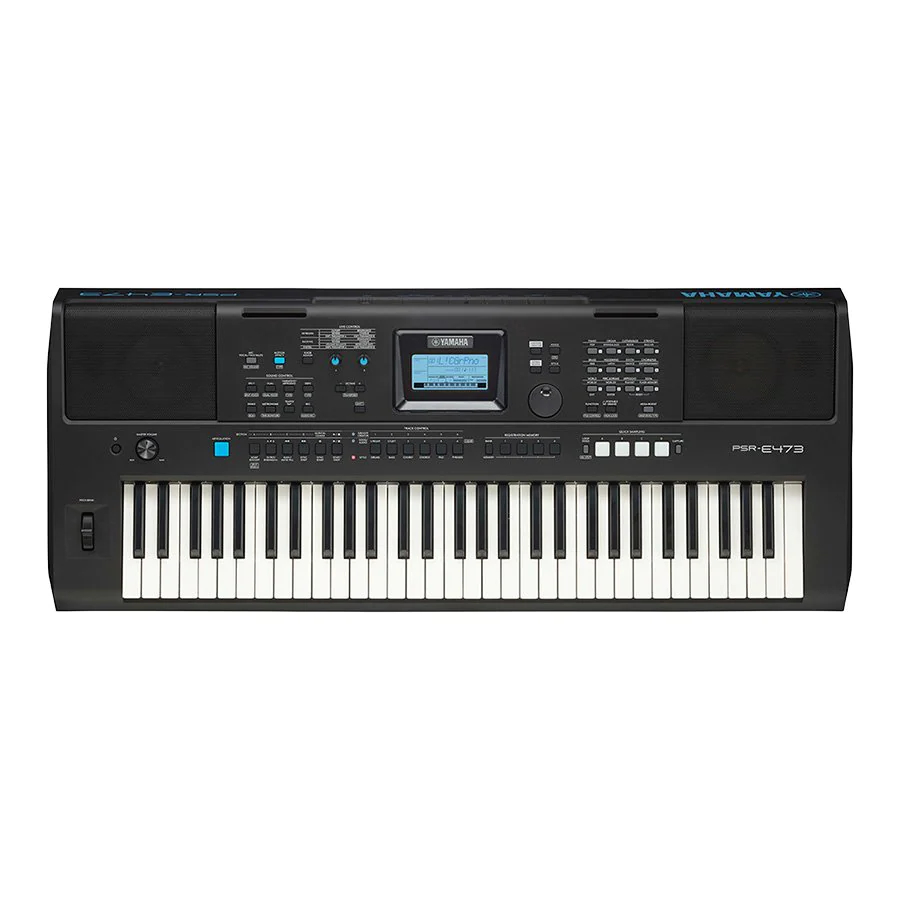
Yamaha PSR E473: Yamaha’s top-of-the-line E-series arranger keyboard is an impressive package offering speakers, over 800 voices, 290 styles, a built-in audio interface, quick sampling and Motion Effect functionality.
Korg EK-50L: The ‘Limitless’ version of the EK-50 Entertainer Keyboard, the EK-50L is essentially an i3 with speakers and no sequencer.
Casio CT-X5000: 800 tones, 260 styles, Casio’s AiX sound source, powerful twin 15W bass reflex speakers and microphone input make the CT-X5000 a solid contender from the Casio
In something of an evolution of Korg’s erstwhile Combi nomenclature, the i3’s preset currency is the soundset. Soundsets offer the ability to layer four voices together - one lower/split voice and three upper voices - and there are 200 of them provided as presets to get you going. The standard of the preset voices is very high, and the soundset architecture lends enough flexibility to create almost limitless massive combinations of sounds.
Meanwhile, each auto-accompaniment style has up to eight parts that can all be turned on or off and balanced individually, so even though there’s no actual style editor on board, there’s plenty of scope for tailoring the backing band’s performance.
The programming and arrangement of the styles themselves is sophisticated and well-executed. Similar to the Pa series, each style includes 4 variations, plus an intro, ending, count-in, break and fill, to customise and punctuate your arrangement.
The i3 has a couple more of the usual arranger keyboard tricks up its sleeve. For instance, there’s a dedicated grand piano button that resets the instrument to its default acoustic piano sound at any point. With the Smart Chord feature, rather than playing chord shapes on the left-hand side of the keyboard, you can trigger chords from the eight allocated chord buttons, each of which will generate a chord suitable for the current style.
A handy Set List function gives you ten banks of five slots equal to fifty registration memory slots for storing combinations of soundsets and style settings for your song performances. The first three banks of these are populated with preset registrations, with the rest reserved for you to save your own favourites, although annoyingly, there doesn’t seem to be a way to name the songs in the list.
Adjacent to the volume control, two EQ controls (one for treble, one for bass) are handy to have when playing in a variety of environments, but I reckon these controls could have been made more use of as real-time performance controls for, say, the filter or the effects. Overall EQ is surely a ‘set-and-leave’ parameter more suitable for sequestering in the settings menu, rather than occupying such a prime performance position on the front panel.
Sequence of events
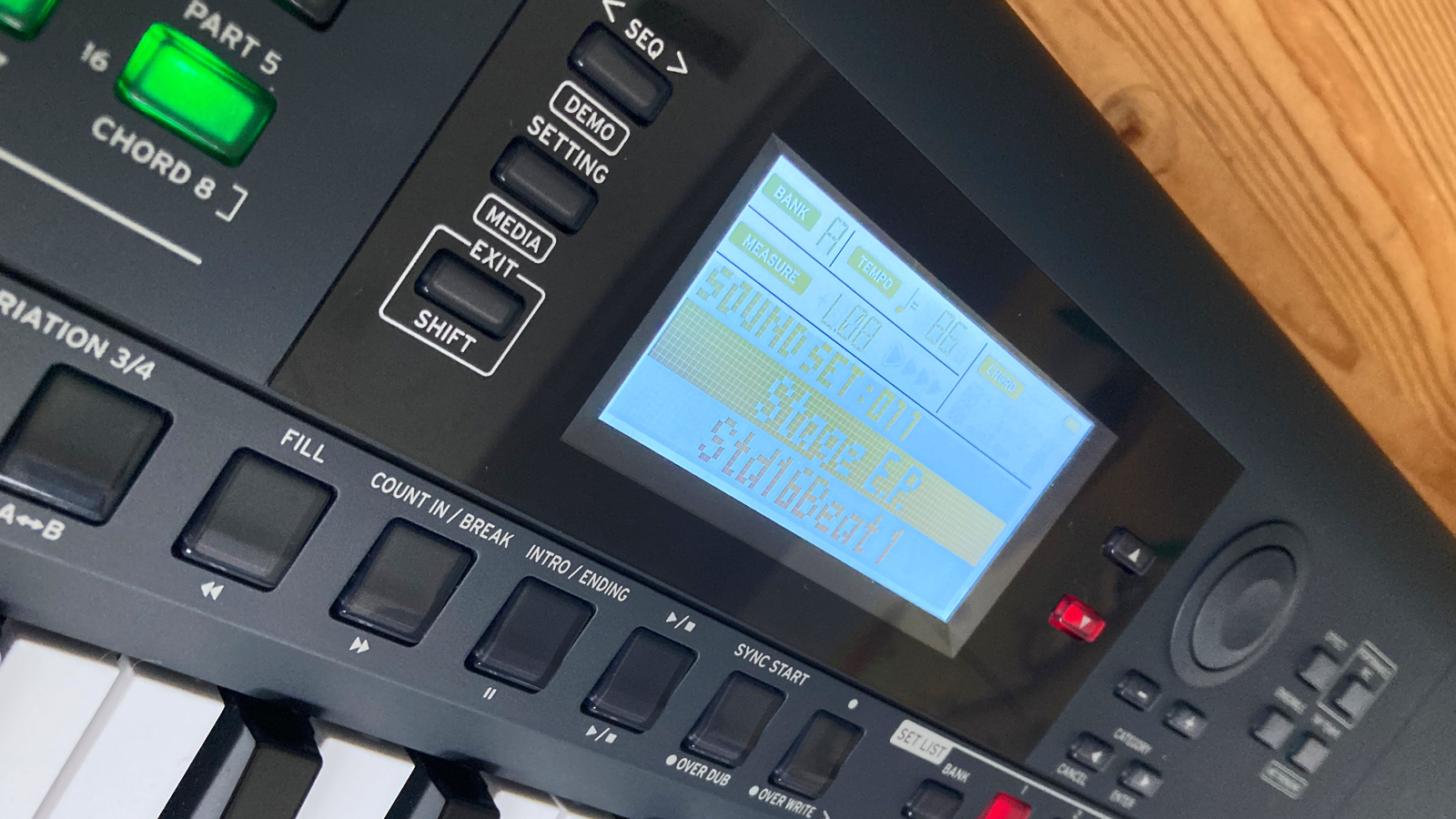
Aside from the expanded sound engine, what really sets the i3 apart from its EK-50 cousin is its 16-track, 999-song capacity real-time sequencer. The inference is that this enables the i3 to be used as a standalone solution for creating songs. Unfortunately, in practice, the sequencer isn’t the fully-fledged music production tool you might be led to believe.
MIDI recordings are made directly into the i3’s internal memory as user songs, but there’s no quantize function, no event list, and the sequencer can’t be step-programmed. Instead, when you record a song as a performance via the MIDI recorder, each of the auto-accompaniment parts gets recorded onto its own pre-allocated track. You can then select these tracks to be overwritten, overdubbed onto or played with a different voice, but there’s no way to quantize anything or delve into the tracks on a note-by-note basis to correct errors.
On the audio side of things, no built-in audio interface means that you can’t send audio from the i3 directly to your computer. However, as long as you have a USB stick connected to the USB to Device port, you can record performances as audio (as well as any audio coming into the i3’s audio input) directly to the USB stick.
Beyond the addition of effects, you can’t really edit the sounds, although you can swap out any voices you don’t like within the arrangement parts for an alternative from the exhaustive menu of onboard voices. It’s important to note that the i3 is not a synthesizer, so beyond combining voices into soundsets, there’s no deep editing to be had - even the 90’s i3 had some control over filter cutoff and modulation, which are absent here, making the current i3 primarily a box of very charming presets.
Final verdict
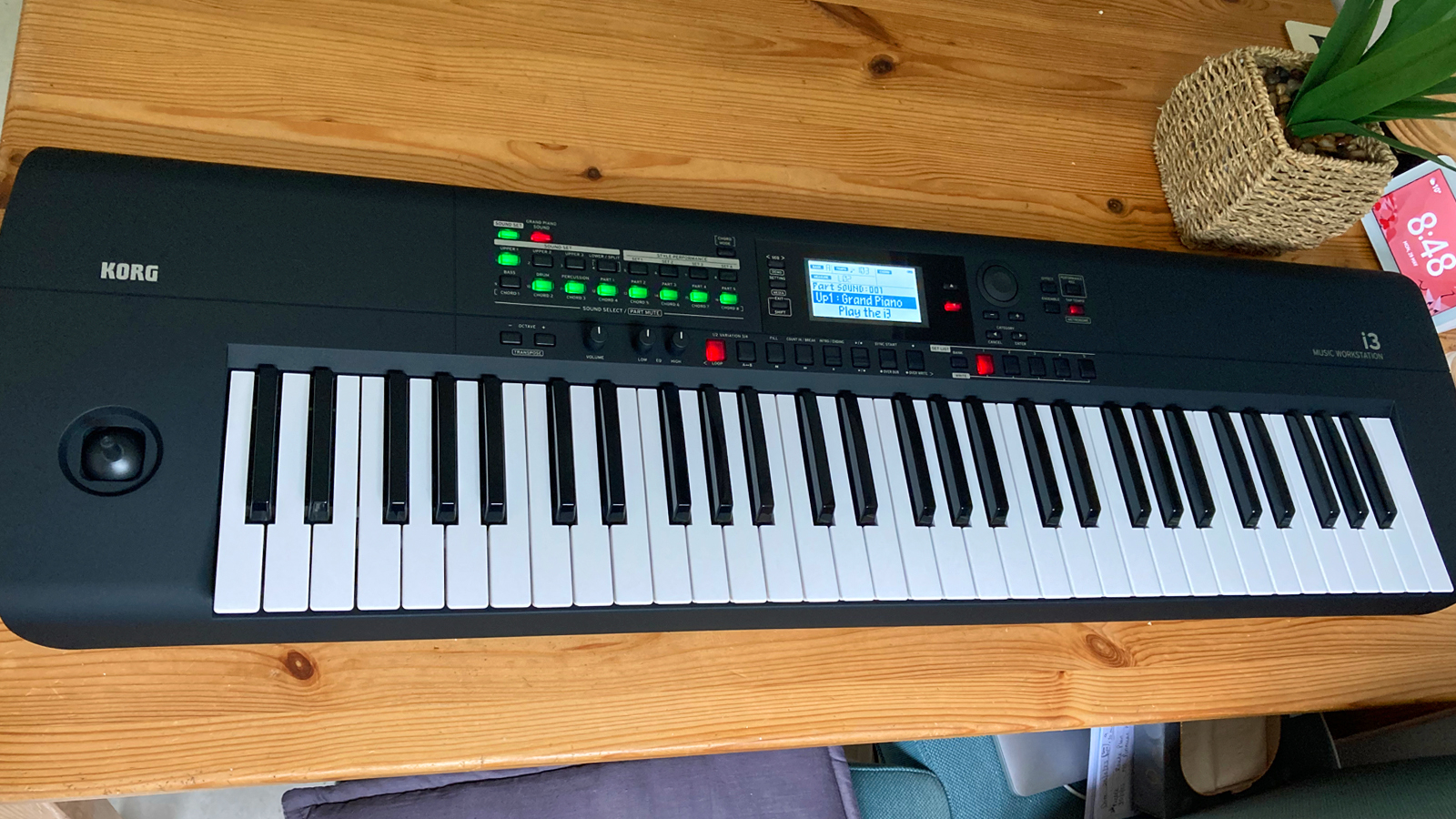
If your idea of an arranger keyboard is one with speakers that you can just turn on and play without connecting to anything, the i3 probably won’t be for you. In fact, I found it a bit puzzling trying to establish who exactly might be in the market for one.
For beginners and hobbyists, it’s easy and fun to play, but if you have an idea in your head of where you want to get to with a song, it’s hard work to get anywhere close to it with the i3. For songwriters and composers, the MIDI performance recorder works well as a sketchpad for figuring out how chord progressions might work in a band arrangement setting, but I certainly wouldn’t aim to finish a track without exporting to a DAW - it simply doesn’t have the onboard editing tools for this task.
Performers will enjoy the sheer variety, quality and quantity of sounds available, together with the ability to combine these into soundsets and set lists, but lack of real-time controls holds the i3 back in this regard. Home studio owners will appreciate its ability to be used as the centrepiece of a MIDI setup, but as a controller, it doesn’t really offer anything over a much cheaper, purpose-designed controller equipped with encoders and sliders for real-time control.
Considering that the main thing that qualifies the i3 as a workstation is its sequencer, it’s not really a functional enough tool to warrant the distinction. It’s like this keyboard gives with one hand and takes away with the other - you have a great-sounding, portable arranger keyboard with sophisticated styles but no speakers. You have a 16-track sequencer, hobbled by limited editing capabilities and no quantize function. You have almost 800 tones, but you can’t edit any of them. You can store 50 song settings in the set list, but can’t name them.
For me, the i3 spreads itself a little too thinly across a range of target markets, attempting to satisfy all demographics but falling short in some way in almost all of them.
The Korg i3 is a great-sounding keyboard with sophisticated styles, sadly held back by some peculiar shortcomings.
Korg i3 review: Hands-on demos
Jeremy See
Woody’s Piano Shack
Korg i3 review: Specifications
- Dimensions (W x D x H, mm): 1,037 x 296 x 80
- Weight: 4㎏
- Keys: 61 full-size, velocity-sensitive with three levels of touch response
- Polyphony: 64
- Number of Tones: 790
- Number of Rhythms / Styles: 270
- Other features: Auto accompaniment, 16-track sequencer, pitch bend/modulation joystick
- Speakers: None
- Power Supply: 12V DC / 6 x AA Batteries
- Connectivity: 3.5mm headphones jack, 6.3mm sustain pedal input, 6.3mm unbalanced line outputs, 3.5mm audio input, 5-pin DIN MIDI OUT, USB to Host, USB to Device
- Contact: Korg







